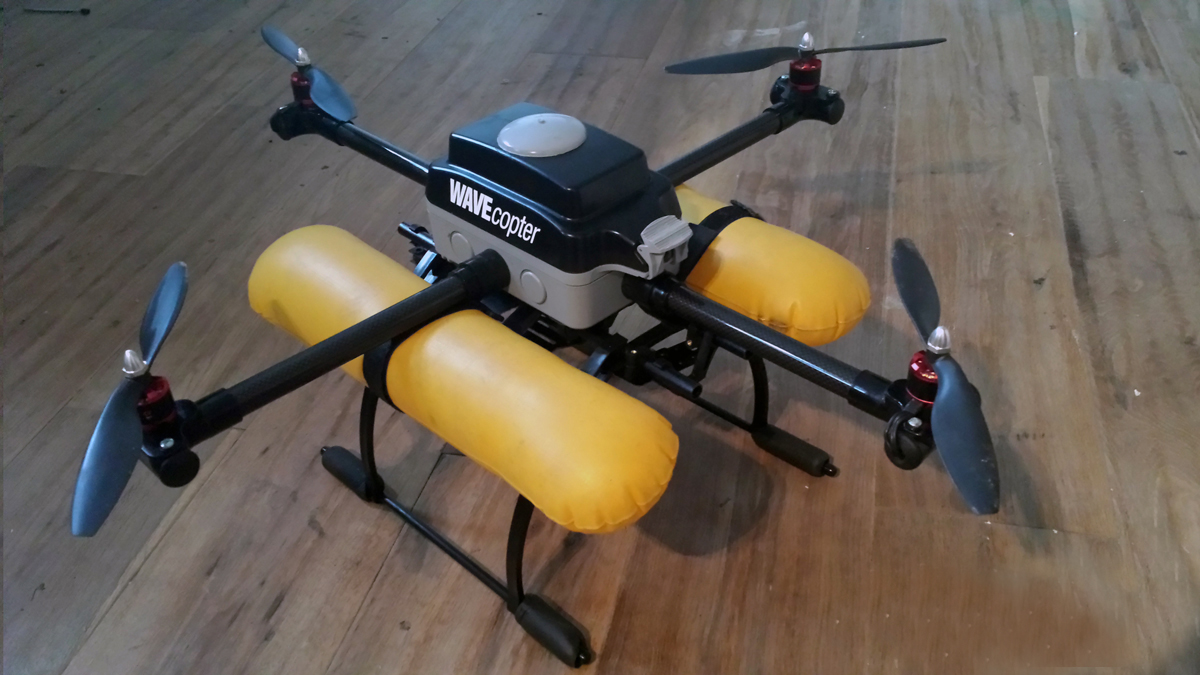WAVEcopter is a fully waterproof quadcopter frame that I have constructed mostly from readily available and cheap electrical parts. My reasons for building it were to gain a new perspective on surfing photography, do aerial surveying of event sites, and to satisfy my general fascination with robotics and aviation.
I rebuilt the quadcopter after it suffered a serious collision into a cliff on the south coast of Cornwall, England. (I believe it was a pilot error after relying too much on a GPS fix and moving the quadcopter from its initial takeoff point.) Although this was a serious collision — full throttle into a granite cliff face at about 60 feet — all of the electronics and camera equipment was unscathed. This was testament to the ruggedness of the airframe; damage was limited to broken props, a cracked hub, and severed motor wires, all easily replaced for minimal cost.
The quadcopter is now on build 2 as I’m planning on replacing the Naza M flight controller with an Arducopter control board to enable mission planning with waypoints.
There are lots of different setups for quadcopter electronics, so I’ve skimmed over some of that detail as I think there are better setups than mine (like the Arducopter). The most important part of this project is being able to waterproof the frame while housing an optimum balance of battery power and weight.
The drone has made successful flights of over 10 minutes with no apparent overheating of speed controllers or motors, which was a big initial concern in a airtight/waterproof frame. I’m new to multirotors and I’ve read a lot about this, so it’s either a myth or I’ve been lucky so far. You can add heatsinks for the electronics on the underneath of the main housing if you’re overly concerned.
I hope you enjoy the project!




